Gollum is one of the most fascinating characters in The Lord of the Rings. Many critics consider Tolkien’s mythology to be a world of black and white, where the good is always unshakable and evil is absolute evil.
Gollum, however, definitely proves that this is not really the case. This tormented figure, torn between his residual humanity (as shown by his feelings toward Frodo, the only person who had any consideration for him in centuries), and his terrible craving for the One Ring, makes many pages of the Trilogy impossible to forget.
The dual nature of Gollum/Sméagol is already featured in many ways in the main game, thanks to the subtle way Gollum's ability work (shielding him from the Eye, and allowing Frodo to reduce corruption, but at the same time revealing him), and to the presence of several Event cards that revolve around his presence as the Guide of the Fellowship.
When we designed the 1st Edition expansion, Battles of the Third Age, we thought that this interesting character could have an even greater role in the game. From a narrative point of view, with Sméagol we introduced a very interesting “what if” in the story. Gollum is following the tracks of the Fellowship since they go through Moria, and is only “tamed” after Frodo and Sam remain alone. However, it’s not hard to imagine that Gandalf or Aragorn (who captured him before) could have a chance to capture him again, and convince him somehow to guide the Fellowship through the darkest places of Middle-earth.
From the point of view of game mechanics, Sméagol provided a way to balance the game, as one of his abilities removed one of the most annoying (and unwanted) features of the First Edition, the “turn stall” (the possibility of the Shadow player to use Event cards to delay the Fellowship when entering Mordor by one full turn – ed.).
His main ability was (and is) his unusual “Level X”: Sméagol enters the game randomly, when a Sméagol tile is drawn from the Hunt pool, and he has the same level as the highest-level character in the Fellowship. He automatically becomes the Guide and adds several points of “corruption shield” to the Ringbearers; however, by doing so, he effectively “cancels” any other Guide ability that the Free Peoples player may want to use.
As an additional benefit, any other Sméagol tile later drawn from the Hunt Pool was a “0” tile.
Finally, if Sméagol was “sacrificed” to help the Fellowship, he became a liability for the Free Peoples player, as the “We Shall Get It” play-on-the-table card entered the game: a potentially very nasty ace up the sleeve of the Shadow player, as it allows to re-draw a Hunt tile.
Overall, Sméagol was a very interesting character already as defined by Battles of the Third Age. However, the new rules in 2nd Edition who prevent turn stalling in a “structural” way made his secondary ability, declaring the Fellowship in mid-turn, pointless.
There was another well-founded criticism on this character – differently from any other character in the game, his arrival was entirely random, and his presence and use could swing the balance in the game quite wildly in one direction or another.
Was it possible to redefine him, correcting these faults, and make him an even more interesting addition to the 2nd Edition?
Removing his secondary effect altogether was an easy choice. It made the complex rules of this character simpler, and the effect fortunately was un-necessary now. Cut!
How to deal with the randomness was a more difficult decision. We considered that his random arrival was really essential – he is a character, but his main effect is to influence the Hunt which, by design, is a part of the game which the players can influence, but not control fully.
We decided that, as it happens in other parts of the game, we should give to the players more chances to influence the randomness, trying to turn the odds to their favor. The key to this was the introduction of new Event cards: most notably, “Safe Paths in the Dark”, that adds 2 Sméagol tiles to the Hunt Pool. In this way, the Free Peoples player may increase the chances of Smeagol’s arrival, and at the same time he increases the number of potential “0” tiles in the pool.
However, new Events are also added to the Shadow deck, and if “We Won’t Go Back” enters the game, the Sméagol tiles ADD corruption to the Ringbearers. Now, the Free Peoples player has reasons to regret adding more of them to the Hunt Pool…
The additional interplay created by these Event cards gives to both players a way to influence the randomness of Smeagol’s arrival, and how much his presence helps or hurts the Fellowship – in a similar way to the “seeding” of the Hunt Pool with special tiles. The rest of Sméagol’s abilities did not really needed to be tweaked further, and were left essentially unchanged, with the notable exception that now Smeagol's tiles are not placed back in the pool when drawn.
The redesign of all the characters included in Battles of the Third Age was over; they were integrated by new characters making the new additions better-rounded and more balanced… What else could we do to make Lords of Middle-earth the most exciting character-base expansion to War of the Ring we could think of?

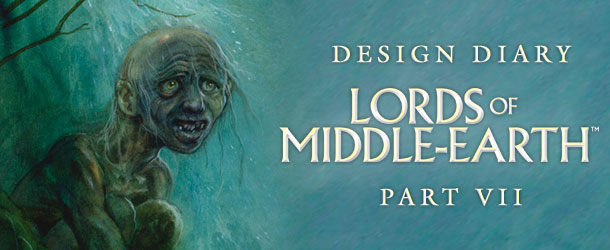
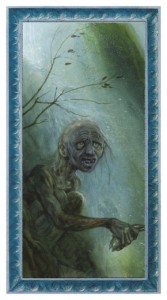
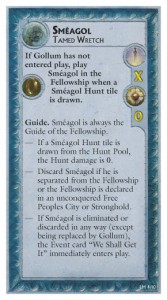

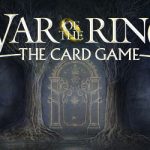
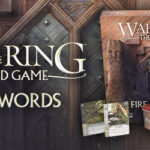





Follow Us on